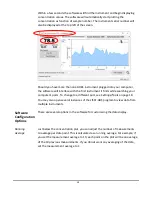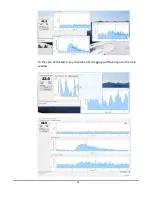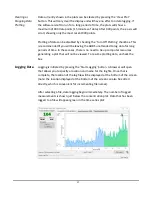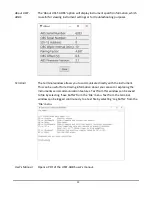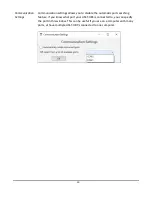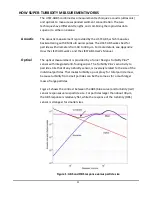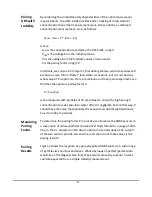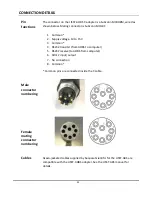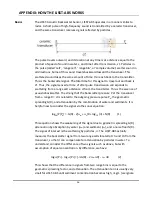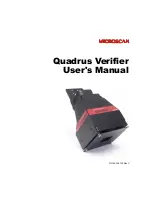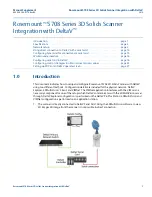
26
APPENDIX: HOW THE LISST-ABS WORKS
Basics
The LISST-Acoustic Backscatter Sensor, LISST-ABS operates in a manner similar to
radar. A short pulse of high-frequency sound is transmitted by a ceramic transducer,
and the same transducer receives signals reflected by particles.
The pulse travels outward, and its location at any time is at a distance equal to the
product of speed of sound in water
c
, and time
t
after transmission,
ct
. Particles in
the pulse (called 'cell', 'range cell', ' range bin', or 'sample volume') scatter sound in
all directions. Some of this sound travels backward toward the transducer. This
scattered sound takes the same amount of time
t
to reach back to the transmitter.
This is the backscatter signal. The total time for this signal to travel out and back is
2
t
. Thus, the signal sensed at time
2t
after pulse transmission corresponds to
scattering from a range cell a distance
ct
from the transmitter. This is the essence of
acoustic backscatter. The strength of the backscatter pressure P at the transducer
from a range R =
ct
is related to the outgoing pressure pulse P
o
, the geometric
spreading G(R), and attenuation by the combination of water and sediments. It is
helpful now to consider the signal via the sonar equation:
log
10
[P/P
o
] = -G(R) - 2[
w
+
s
]R + log
10
(
) + N(R) (1)
This equation shows the weakening of the signal due to geometric spreading G(R),
attenuation by absorption by water (
w
) and sediment (
s
), and a noise floor N(R).
The signal of interest is the scattering by particles,
. The LISST-ABS actually
measures the backscatter signal from two range cells located at c
t
1
and c
t
2
from the
transducer, so that it can compensate for attenuation by particles in water. To
understand, consider the difference of two signals such as above, but with
assumption of equal concentration. By difference, we have:
log
10
[P
1
] - log
10
[P
2
] = [-
G(R)
−
2
w
R] -
s
R (2)
This shows that the difference in signals from two range bins is equal to the
geometric spreading factor, and attenuation. The attenuation term is usually very
small for LISST-ABS until sediment concentration becomes high, >1g/L. [we ignore



